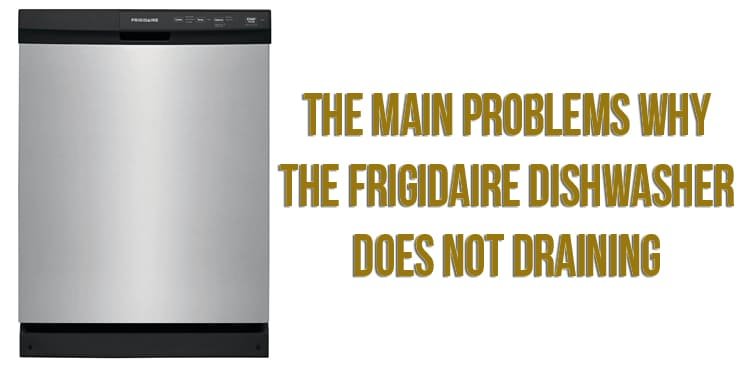
To put it simply, when your trusty dishwasher displays the E1 error, it’s essentially saying, “Hey, there might be an issue with the water getting into me!” This code typically suggests that the dishwasher is taking longer than usual to fill with water, or it isn’t receiving water at all. Imagine turning on a garden hose only to find a trickle instead of a gush – that’s what your dishwasher is experiencing. Understanding this code is the first step to getting your dishwasher back to its sparkling best, and luckily, it’s often a straightforward fix.
Understanding the E1 Error Code
The E1 error code on your Frigidaire dishwasher is all about water – specifically, the lack of it. Think of your dishwasher like a cooking pot that needs enough water to boil pasta. If there’s not enough water, it can’t work properly. The E1 code indicates that the dishwasher isn’t filling up as it should, which can happen for a few reasons. It could be a kinked hose, a clogged valve, or an issue with the water supply itself.
Water is essential for your dishwasher to do its job. It’s like the fuel needed for a car to run. Without enough water, the dishwasher can’t clean your dishes effectively. If you’ve ever dealt with dishes that come out looking less than pristine, the culprit could be an issue flagged by the E1 code. The dishwasher is smart enough to recognize this problem, and it shows you the E1 code so you can take action.
When you see this code, it’s your dishwasher’s way of waving a red flag. It needs a bit of attention to make sure water is flowing freely into the machine. Ignoring it is like ignoring an empty gas tank light in your car – sooner or later, you’ll end up stuck. The good news is that you can often resolve this issue on your own by checking a few things, which we’ll explore next.
Common Causes of the E1 Error
So, what might cause your Frigidaire dishwasher to display this E1 error code? As it turns out, there are several potential culprits. First, let’s consider the water inlet valve. This valve is like a bouncer at a club, deciding how much water gets into the dishwasher. If it’s malfunctioning, the water might not flow properly. A clogged or faulty valve can restrict the water, triggering the E1 error.
Next up, we have the water supply hose. If it’s kinked or blocked, water can’t pass through efficiently. It’s like trying to drink through a straw that’s bent at a sharp angle – the flow just isn’t there. This is a surprisingly common issue and one of the easiest to fix. Simply checking the hose and ensuring it’s straight can sometimes solve the problem.
Another potential cause is the household water pressure. If the pressure is too low, there might not be enough force to push the water into the dishwasher quickly enough. Imagine trying to fill a pool with a leaky hose – it would take forever! Checking your home’s water pressure and ensuring it meets the dishwasher’s requirements can often prevent the E1 error from appearing.
How to Fix the E1 Error
Now that you know what might be causing the E1 error, let’s discuss how to fix it. Begin by examining the water inlet valve. If it’s clogged, cleaning it out might do the trick. Unplug the dishwasher, locate the valve (usually at the bottom or back), and check for blockages. If you’re unsure of how to access it, your dishwasher’s manual can be a helpful guide.
Next, take a look at the water supply hose. Ensure that it’s not kinked or twisted. Straightening out any bends can often restore normal water flow. If the hose appears damaged or worn, consider replacing it. New hoses are inexpensive and can make all the difference in resolving water flow issues.
Lastly, check your home’s water pressure. Use a pressure gauge to ensure it meets the dishwasher’s requirements, typically noted in the owner’s manual. If the pressure is on the low side, you may need to consult a plumber to adjust it. In many cases, these steps are enough to clear the E1 error, and your dishwasher will be back to its efficient self.
Preventing Future Errors
After resolving the E1 error, it’s wise to take a few preventative steps to avoid similar issues down the road. First and foremost, regularly check your dishwasher’s water inlet valve and hose for any signs of wear or damage. By catching potential problems early, you can prevent them from becoming bigger headaches later on.
Routine maintenance is key to a happy, long-lasting dishwasher. Consider running a cleaning cycle once a month using a dishwasher cleaner to keep all the internal parts in good condition. This helps prevent build-up that can lead to clogs or malfunctions, which often trigger error codes like E1.
Moreover, keeping an eye on your home’s plumbing system and maintaining adequate water pressure will ensure your dishwasher has a steady supply of water. Just like you wouldn’t let your car run on fumes, don’t let your dishwasher run on insufficient water. With these tips in mind, you’ll minimize the chances of seeing that pesky E1 error again.
By taking these steps, you’re not just fixing an error; you’re enhancing the efficiency and longevity of your dishwasher. With regular care, your Frigidaire dishwasher will continue to tackle dirty dishes with ease, leaving you with more time to enjoy the things you love.